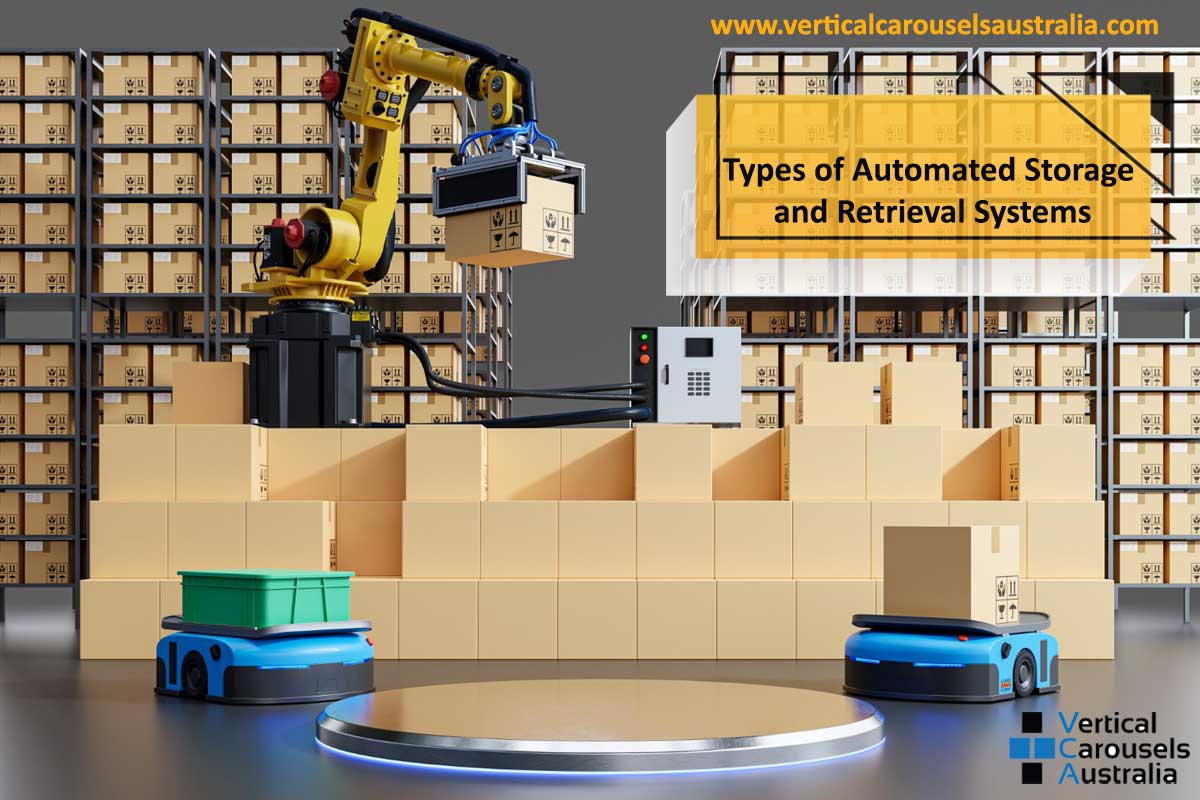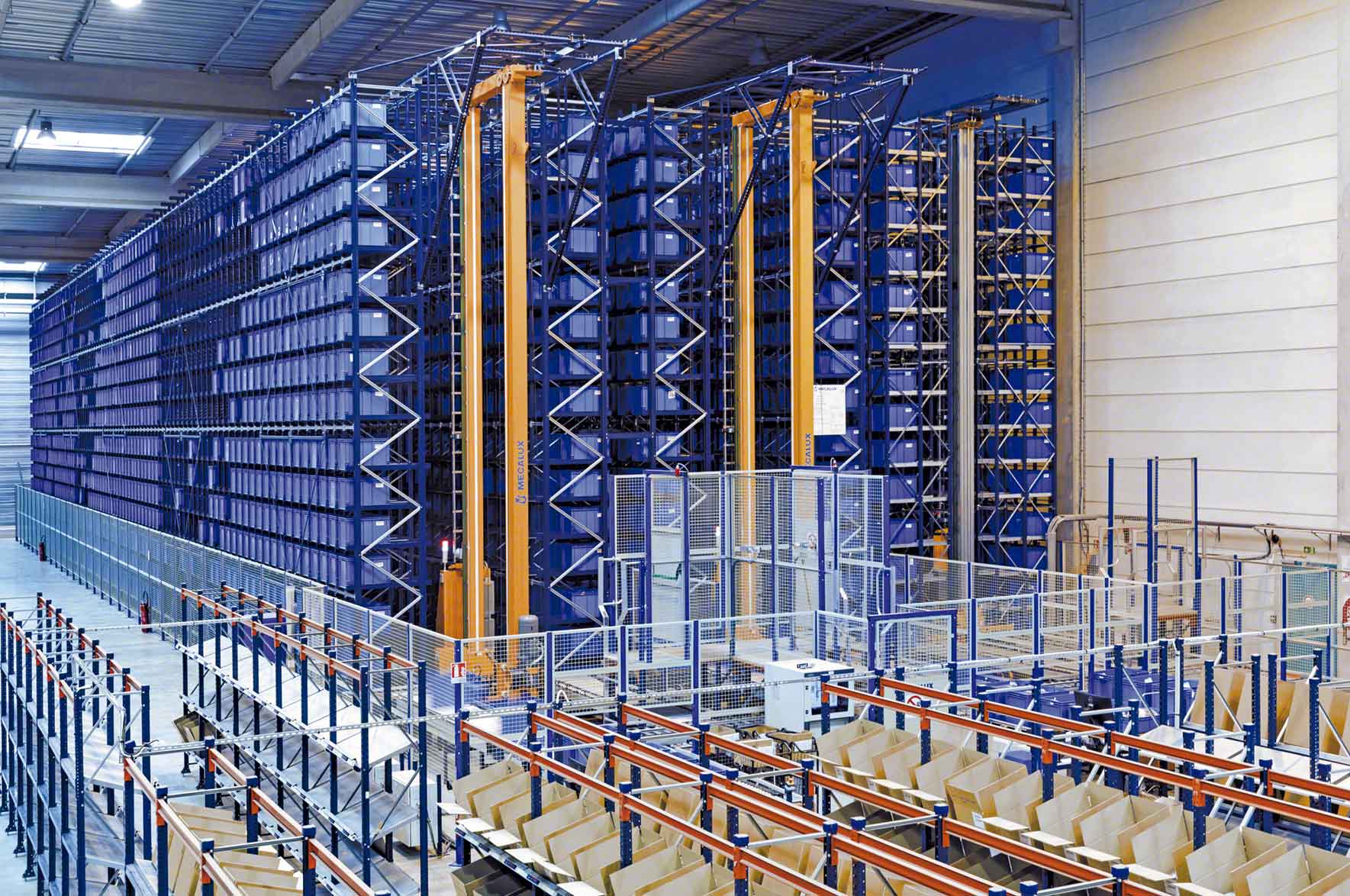
Automated storage or Carousel storage solutions were once out of reach by many small retail warehouses. They didn’t have enough budget or investment to purchase such advanced technology. However, with the progress in time, Automated storage systems have evolved rapidly to provide a variety of options. Based on the variations in speed, size, price and versatility, carousel storage solutions have become popular even among small enterprises.
Are you still concerned if automated storage and retrieval systems are right for your facility’s operations? Below we have put together detailed information to help you understand if this high-density storage system can help your warehouse run efficiently, which includes the different types of storage systems and their applications.
An automated storage or retrieval system is an advanced high-density storage system for warehouses or facilities that are particularly designed for storing and retrieving warehouse products on demand.
This systematic technology has different variations as previously mentioned comprising of cranes, vertical lift modules/vertical lift machines(VLMs), vertical carousels, shuttles, mini, micro and unit loads. They are controlled by specially integrated warehouse execution or management software.
By having integrated this automated storage solution, daily tasks of inventory storage and retrieval can be easily done. Along with this, there are several powerful benefits that include:

Picking up orders, packing and processing them is undoubtedly one of the most time-consuming operations of a warehouse facility. The manual process of picking up orders can consume half of the time in sorting the ordered item. Automated storage systems are a great alternative to such a process through its Goods to the person ordering picking principle. In this mode of operation, the picker does not have to move around looking for the selected item. Instead, a crane, shuttle, vertical carousel or vertical module retrieves the product right from its point of storage to the picker.
The importance of e-commerce delivery for order fulfilment processes cannot be exaggerated. Now customers can place orders any time of the day. Previously, e-commerce companies accepted and processed orders with several restrictions mostly due to operator shifts that included expensive night or weekend delivery charges. No such company can pick and process orders 24×7 with the help of an automated storage system. Post-operation hours the system places the products in temporary storage for processing until the shift sharts again. In such cases, the company does not lose orders and can continuously produce, even when such orders do not physically leave the warehouse facility.
In a normal warehouse, every process takes different amounts of time to fulfil. If such inconsistencies are not rightly managed, then it can slow down the entire operation to a standstill or halt. Automated storage systems aim to prevent such breakdowns by making sure that ample supplies/products are always ready at every stage to keep things running.
One of the main advantages of an AS/RS is its function to store products in a manner that can efficiently use the available space even in the long term. By installing an AS/RS, all operations can be automated for their long-term storage process of products and retrieving them at times of need. By combing the automated system with warehouse management software, facilities can smartly utilise or optimise the inventory based on their information like batch number, lot number and so on.
Automated storage systems primarily come in two variants: Unit load AS/RS and mini-load AS/RS. Apart from them, there are six types of storage systems.
Let us know about each of them in a little more detail.
This type of ASRS is especially used for handling exceptional heavy and large loads. The high loading capacity of the storage system can fully handle pallets as well as cases. This system comprises a narrow aisle rack that can move to more than 100 feet to retrieve the stored products(pallets) whenever needed.
In this system, the pallet racks are placed with narrow aisles in between them. The crane moves between aisles (both vertically and horizontally) to store and fetch products. Not to mention, the crane is also fixed to a single aisle.
This system is quite similar to that of the fixed unit load ASRS and works pretty much in a similar manner. This storage system comprises a crane moving between narrow aisles of pallets along a predetermined path. Also, this allows the crane to move along multiple aisles for better work efficiency.
The Mini Load automated storage system as the name suggests is suitable for smaller loads, unlike unit load ASRS. In place of full pallets, they are capable of handling small trays or boxes. Mini Load ASRS is suitable for operations that need storage locations for a large number of stock units. This system however lacks in floor space needed for traditional carton flow shelving.
Shuttle-based storage system is known to deliver the products or inventories through a robotic shuttle running between a racking structure. They are capable of running on single to multiple levels based on the protocols of the operation. The shuttles mainly deliver the trays or boxes to the working station integrated with the system.
Carousel based systems comprise bins of the product or inventory that rotate along a track continuously. At the operator’s request, the system would automatically rotate to bring the appropriate bin of a particular item that needs to be picked.
This carousel-based ASRS has either horizontal carousels (storage bins that move horizontally in a circular motion) or a vertical carousel (storage bins that move vertically like a Ferris wheel). Robotic horizontal carousels are another variety of this storage system that provides the same functionality.
A vertical lift module or vertical lift machine (VLM) is an enclosed system with a centrally located extractor and trays columns on each side. Vertical lift modules operate in the goods-to-person principle.
Upon the operator’s request, the inserter or extractor locates the required tray, gets it delivered to the operator for the order completion. After the order is completed, the vertical lift module will automatically return the tray to its appropriate location before getting the next ordered tray.
A Micro-Load Stocker ASRS is ideal for storing and retrieving individual trays or cartons. This system is highly suitable for buffering and sequencing in a high-density footprint. Micro loaders are enclosed with a centrally located inserter/extractor device that picks a specific sequence of inventory. They are then discharged onto the waiting conveyor for processing. However, different models have different ways of storing and extracting by taking one item or a group of about five items in a single go.
The integration of an automated storage and retrieval system into your warehouse operation is largely dependent on the objectives of your business. Factors like the business cycle, the operational goals, growth level or progress and investment all influence your need to implement this system. If you are interested to get one, it would be a great idea to contact popular high-density storage dealers like vertical carousels Australia. Consulting with your warehouse design would be great to identify the right carousel storage solutions for your facility.